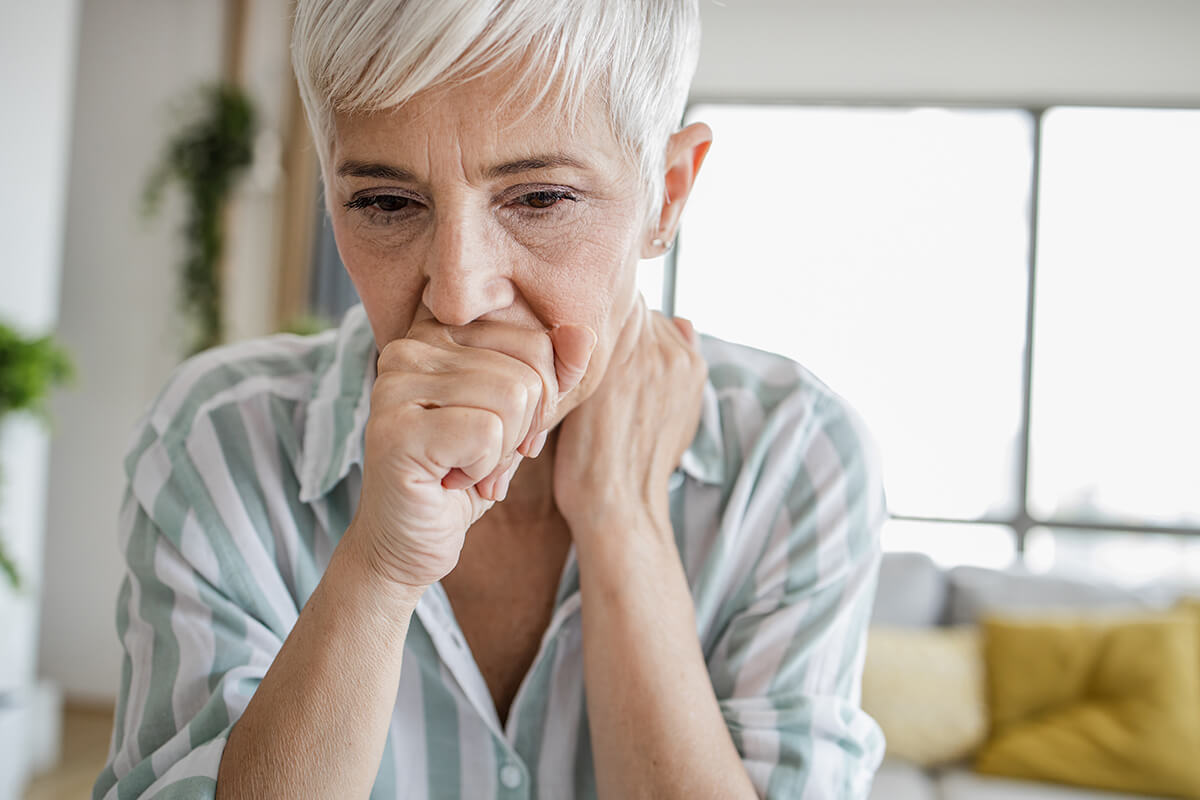Could it be COPD? Signs, symptoms and what to know

COPD stands for chronic obstructive pulmonary disease. It’s actually a collection of diseases, including emphysema and chronic bronchitis, that affect breathing. It is a slow, progressive condition, which means the symptoms can get worse, explains Caroline Carter, M.D., a board-certified family medicine physician at Village Medical in Sugar Land, Texas.
There are 16 million Americans with COPD. But millions more people have this disease and don’t know it, according to the Centers for Disease Control and Prevention (CDC).1 That’s why it’s important to recognize the signs — and know how to seek help. While COPD isn’t curable, it is treatable. By seeing a provider and receiving treatment, it is possible for those with the condition to improve their symptoms.
Here are the key things to know about COPD, including the risk factors, most common symptoms and how to find the right treatment.
Who is most at risk of developing COPD?
One of the main causes of COPD is tobacco smoke. But COPD doesn’t just affect smokers. Nonsmokers can also get COPD. Some of the other risk factors include:2
- Secondhand smoke from living with a smoker or growing up exposed to tobacco smoke
- A history of respiratory infections during childhood or a history of asthma
- Environmental factors, such as exposure to air pollution like wood-burning stoves
- Having underdeveloped lungs
- Being over the age of 40 (the lungs don’t work as efficiently as people get older)
People in certain professions may also be at greater risk, depending on their levels of exposure to dust, fumes or chemicals.
It’s helpful to make a list of environmental and secondhand smoke exposures, says Dr. Carter. “If you think about secondhand smoke, especially from back in the day when people often smoked in really tight spaces, you might have more exposure than you think.”
What are symptoms of COPD?
COPD symptoms may appear mild at first or come and go. The main symptoms to look for include: 3,4
- Shortness of breath
- Trouble taking a deep breath
- Frequent coughing or wheezing, or a persistent cough
- Excess phlegm
- Tightness in the chest
- Feeling tired or exhausted
The symptoms of COPD can be mistaken for other illnesses, such as chronic colds or other respiratory infections. Similarly, symptoms of COPD also can be caused by other illnesses including asthma. People might not realize that their symptoms are related to COPD. Seeing a health care provider regularly is key, because the provider may be able to help spot a pattern in symptoms, explains Dr. Carter.
How is COPD diagnosed?
COPD is diagnosed by a provider, who will ask about your health history and symptoms, including how long you've had them. Your provider will get into details about lifestyle too, including what you do for a living and whether you’ve ever smoked.
Your provider may order a spirometry test to help arrive at a diagnosis. This 30- to 45-minute test measures how well the lungs work. A technician clips your nose and asks you to breathe into a plastic mouthpiece. The test measures how much air you're able to breathe in and out, as well as how easily you can do it.5
Sometimes your provider may give certain instructions before the test about how to prepare for it. For instance, if you use an inhaler, your provider may ask you not to use it. After the test, your lung function is compared to other people of the same age, height and gender.5
How is COPD treated?
Getting a diagnosis of COPD is important for those who have it. That way, your provider can work with you on a treatment plan that may help improve symptoms. Treatment might include:6
Strategies to quit smoking
That includes e-cigarettes too, notes Dr. Carter. Your provider may recommend medications and counseling, for instance.
Medications to ease symptoms
This may be a combination of medications. There are prescriptions that can relieve immediate symptoms, such as inhalers. There are also long-acting drugs that can help clear the airways.
Pulmonary rehabilitation to breathe better
Your provider may suggest a pulmonary rehabilitation program. These specialized programs teach breathing techniques that help manage shortness of breath. They also offer exercise training to help strengthen the muscles you use to breathe and build stamina.7
Oxygen therapy
It may make sense for you to receive extra oxygen for your lungs. Not everyone with COPD needs this. Some people need extra oxygen all the time — and others need it just at night.
Lung surgery
For people with severe COPD, providers may suggest surgery. This can include removing damaged air sacs. Or in very severe cases, even receiving lung transplants.
Treatment may change over time, depending on your symptoms. So, it’s important for you and your provider to work together. “If you see your doctor regularly and take some precautions, this can be a very manageable chronic disease that will never get to the stages of needing oxygen or things like that,” says Dr. Carter.
While COPD symptoms may be challenging, they can be managed. Getting the right treatment can help you breathe better. And that’s the first step to living with COPD.